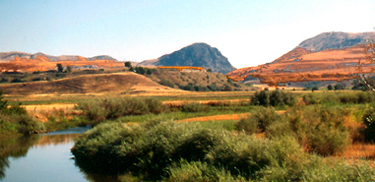
| ThE
HiStOrY | CoOl
FaCtS | NeAt PlAcEs |
Facts: California National Historic Trail "I think that I may without vanity affirm that I have seen the elephant." - Louisa Clapp The elephant that emigrants on the California Trail joked about was a common metaphor for the difficulty of their journey. If you had "seen the elephant", then you had hit some hard traveling. And if you wanted to get to California in pre-railroad times, you were guaranteed an arduous trek. California emigrants faced the greatest challenges of all the pioneer emigrants of the mid-19th century. In addition to the Rockies, these emigrants faced the barren deserts of Nevada and the imposing Sierra Nevada Range. With a variety of destinations in California, and jumping-off points in Missouri, the California Trail resembles not a single cord, but a rope frayed at both ends. Numerous cutoffs and alternate routes were tried to see which was the "best" in terms of terrain, length and sufficient water and grass for livestock. The total California National Historic Trail system includes approximately 5,665 miles. Of this, approximately 1,100 miles of trail still exist on the ground as trail ruts, traces and other obvious remnants. About 2,171 miles of this system cross public lands, where most of the physical evidence that still exists today is located. An estimated 320 historic sites along the trail system will eventually be available for public use and interpretation. Over 200,000 gold-seekers and farmers used the California Trail
to reach the gold fields and rich farmlands of California during
the 1840s and 1850s, the greatest mass migration in American history. |
 |
| BaCk to PaRkS |